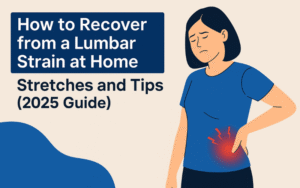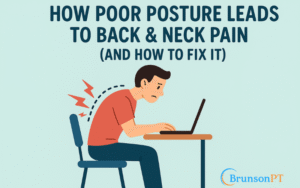Spinal stenosis is a common condition that occurs when the spaces within the spine narrow, putting pressure on the nerves. This can lead to pain, numbness, and difficulty with movement, making everyday activities more challenging. Fortunately, there are many effective treatment options, exercises, and lifestyle changes that can help manage symptoms and improve quality of life. In this guide, we’ll cover everything you need to know about spinal stenosis, from its causes and symptoms to the best treatments and pain management strategies.
Table of Contents
📢 Before you continue: Sign up below for weekly home recovery tips, injury rehab advice, and therapist-approved gear reviews straight to your inbox!!
🏁 What is Spinal Stenosis?
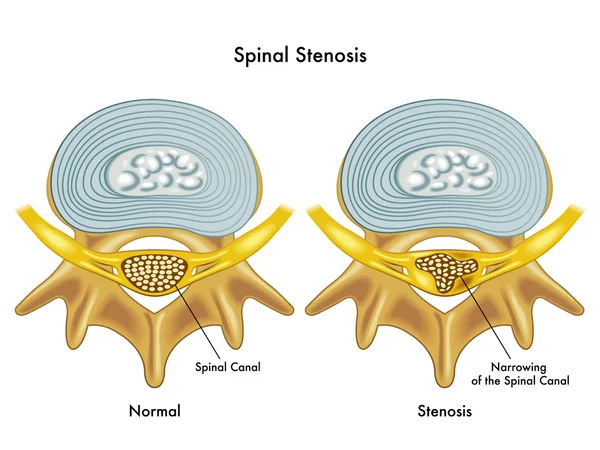
Spinal stenosis develops when the spaces in the spine become too narrow, leading to pressure on the spinal cord and nerves. While aging is the most common cause, several other factors can contribute to the condition.
Causes of Spinal Stenosis
1. Age-Related Degeneration
As people age, the spine naturally undergoes changes that can lead to spinal stenosis. The discs between the vertebrae lose water content and shrink, while the joints and ligaments thicken, reducing space in the spinal canal.
2. Osteoarthritis and Bone Spurs
Osteoarthritis causes the breakdown of cartilage in the spine, leading to inflammation and the formation of bone spurs. These spurs can grow into the spinal canal, further narrowing the space and compressing nerves.
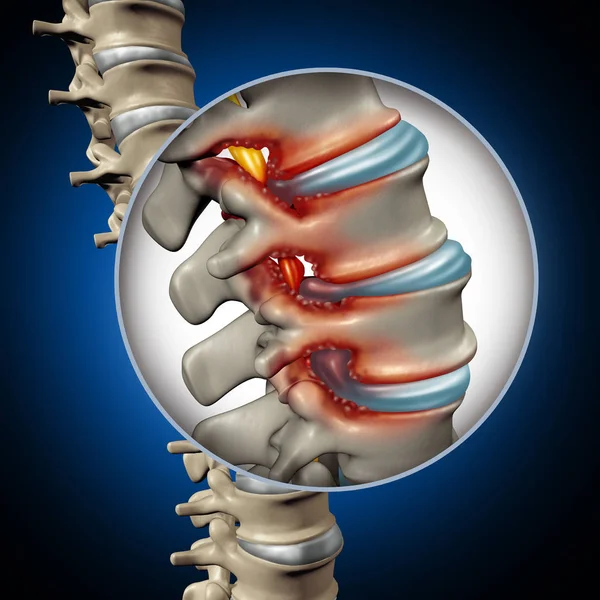
3. Herniated Discs
A herniated disc occurs when the soft inner material of a spinal disc pushes through its outer layer. This bulging disc can press against the spinal cord or nerves, worsening spinal stenosis symptoms.
4. Spinal Injuries or Trauma
Accidents, falls, or previous spine surgeries can cause fractures or swelling that reduce the space in the spinal canal, leading to spinal stenosis. Scar tissue from past surgeries can also contribute to nerve compression.
5. Thickened Ligaments
The ligaments that hold the spine together can become stiff and thick over time, taking up space in the spinal canal and putting pressure on nerves.
6. Congenital (Genetic) Factors
Some people are born with a naturally smaller spinal canal, making them more prone to developing spinal stenosis earlier in life. Certain genetic disorders, such as scoliosis, can also contribute to spinal narrowing.
🟡 Symptoms of Spinal Stenosis
The symptoms of spinal stenosis develop when the narrowed spaces in the spine put pressure on the spinal cord and nearby nerves. Symptoms can vary depending on the location of the stenosis and the severity of nerve compression. In most cases, symptoms worsen over time and may become more noticeable during activities like walking or standing for long periods.
1. Common Symptoms of Spinal Stenosis
- Pain in the back or neck – Aching or sharp pain in the lower back (lumbar spinal stenosis) or neck (cervical spinal stenosis).
- Numbness or tingling – A sensation of pins and needles, usually in the arms, legs, hands, or feet.
- Weakness in the limbs – Difficulty lifting objects, walking, or maintaining balance due to muscle weakness.
- Cramping or stiffness – Muscle tightness, especially in the legs when walking or standing.
- Reduced mobility – Difficulty bending, twisting, or standing upright for long periods.
2. Symptoms of Lumbar Spinal Stenosis (Lower Back)
- Pain, numbness, or weakness in the legs and feet.
- Symptoms worsen when walking or standing but improve when sitting or bending forward (such as leaning on a shopping cart).
- Difficulty walking long distances due to leg fatigue or heaviness.
- In severe cases, loss of bladder or bowel control (a medical emergency).

3. Symptoms of Cervical Spinal Stenosis (Neck)
- Neck pain that may radiate to the shoulders or arms.
- Weakness or numbness in the hands and arms, making it hard to grip objects.
- Problems with balance or coordination.
- Severe cases can lead to difficulty controlling bladder or bowel function.
🧑⚕️ Diagnosis of Spinal Stenosis
Diagnosing spinal stenosis requires a combination of medical history, physical examination, and imaging tests. Since symptoms can be similar to other spine conditions, a thorough evaluation is necessary to confirm the diagnosis and determine the severity of nerve compression.
1. Medical History and Physical Examination
The first step in diagnosing spinal stenosis is a discussion with a doctor about symptoms, lifestyle, and medical history. The doctor may ask:
- When did the symptoms start?
- Do certain activities make the pain worse or better?
- Have there been any prior spine injuries or surgeries?
A physical examination will assess:
- Range of motion in the back and neck.
- Muscle strength and reflexes.
- Sensation in the arms and legs.
- Balance and walking ability.
2. Imaging Tests for Spinal Stenosis
If spinal stenosis is suspected, imaging tests can provide a clear picture of the spine’s structure and reveal any narrowing of the spinal canal.
- X-rays – Show bone spurs, arthritis, or spinal misalignment.
- MRI (Magnetic Resonance Imaging) – Provides detailed images of soft tissues, nerves, and spinal cord compression. This is the most effective test for diagnosing spinal stenosis.
- CT Scan with Myelogram – Uses contrast dye to highlight the spinal canal and detect areas of narrowing, herniated discs, or tumors.
- Electromyography (EMG) and Nerve Conduction Studies – Assess nerve function and determine if symptoms are caused by spinal stenosis or another nerve-related condition.
3. When to See a Doctor
If you experience persistent back or neck pain, numbness, weakness, or difficulty walking, it’s important to seek medical attention. Early diagnosis of spinal stenosis can help prevent worsening symptoms and allow for effective treatment options.
🩹 Best Treatment Options for Spinal Stenosis
Treatment for spinal stenosis focuses on relieving pain, improving mobility, and preventing further nerve compression. Depending on the severity of symptoms, treatment options range from conservative approaches to surgical intervention.
1. Non-Surgical Treatments for Spinal Stenosis
For mild to moderate cases, non-surgical treatments can effectively manage symptoms and improve daily function.
Physical Therapy
Physical therapy strengthens the muscles supporting the spine, improves posture, and increases flexibility. Common exercises include:
- Core-strengthening exercises to support the lower back.
- Stretching to relieve tension in the back and legs.
- Low-impact aerobic exercises like swimming or cycling.
Medications
- Nonsteroidal anti-inflammatory drugs (NSAIDs) – Help reduce pain and inflammation (e.g., ibuprofen, naproxen).
- Muscle relaxants – Relieve muscle spasms and stiffness.
- Nerve pain medications – Such as gabapentin or pregabalin for nerve-related discomfort.
Here’s a comparison chart of different medications commonly used for spinal stenosis treatment:
| Medication Type | Examples | Purpose | Pros | Cons |
|---|---|---|---|---|
| Nonsteroidal Anti-Inflammatory Drugs (NSAIDs) | Ibuprofen (Advil, Motrin), Naproxen (Aleve), Celecoxib (Celebrex) | Reduces pain and inflammation | Over-the-counter availability, effective for mild to moderate pain | May cause stomach irritation, ulcers, or kidney issues with long-term use |
| Acetaminophen (Pain Relievers) | Tylenol | Relieves mild pain | Fewer stomach-related side effects compared to NSAIDs | Does not reduce inflammation, potential liver damage if overused |
| Muscle Relaxants | Cyclobenzaprine (Flexeril), Baclofen, Methocarbamol (Robaxin) | Relieves muscle spasms and stiffness | Helps with muscle tightness and discomfort | May cause drowsiness, dizziness, or dependency if used long-term |
| Nerve Pain Medications | Gabapentin (Neurontin), Pregabalin (Lyrica) | Reduces nerve-related pain and tingling | Specifically targets nerve pain, often effective for chronic symptoms | Potential side effects like dizziness, drowsiness, weight gain |
| Corticosteroids (Oral or Injection) | Prednisone (oral), Epidural Steroid Injections | Reduces inflammation around spinal nerves | Can provide significant temporary relief | Long-term use can cause side effects like weakened bones, high blood sugar |
| Opioid Pain Relievers (For Severe Pain) | Oxycodone (OxyContin), Hydrocodone (Vicodin), Tramadol | Provides strong pain relief for severe cases | Effective for short-term pain management | High risk of addiction and dependency, only recommended for short-term use |
Steroid Injections
Epidural steroid injections can help reduce inflammation around the compressed nerves, providing temporary pain relief. However, they are not a long-term solution and should be used sparingly.
2. Assistive Devices
Certain devices can help ease movement and reduce pressure on the spine:
- Braces or back supports – Provide stability and limit excessive spinal movement.
- Canes or walkers – Improve balance and reduce stress on the lower back.
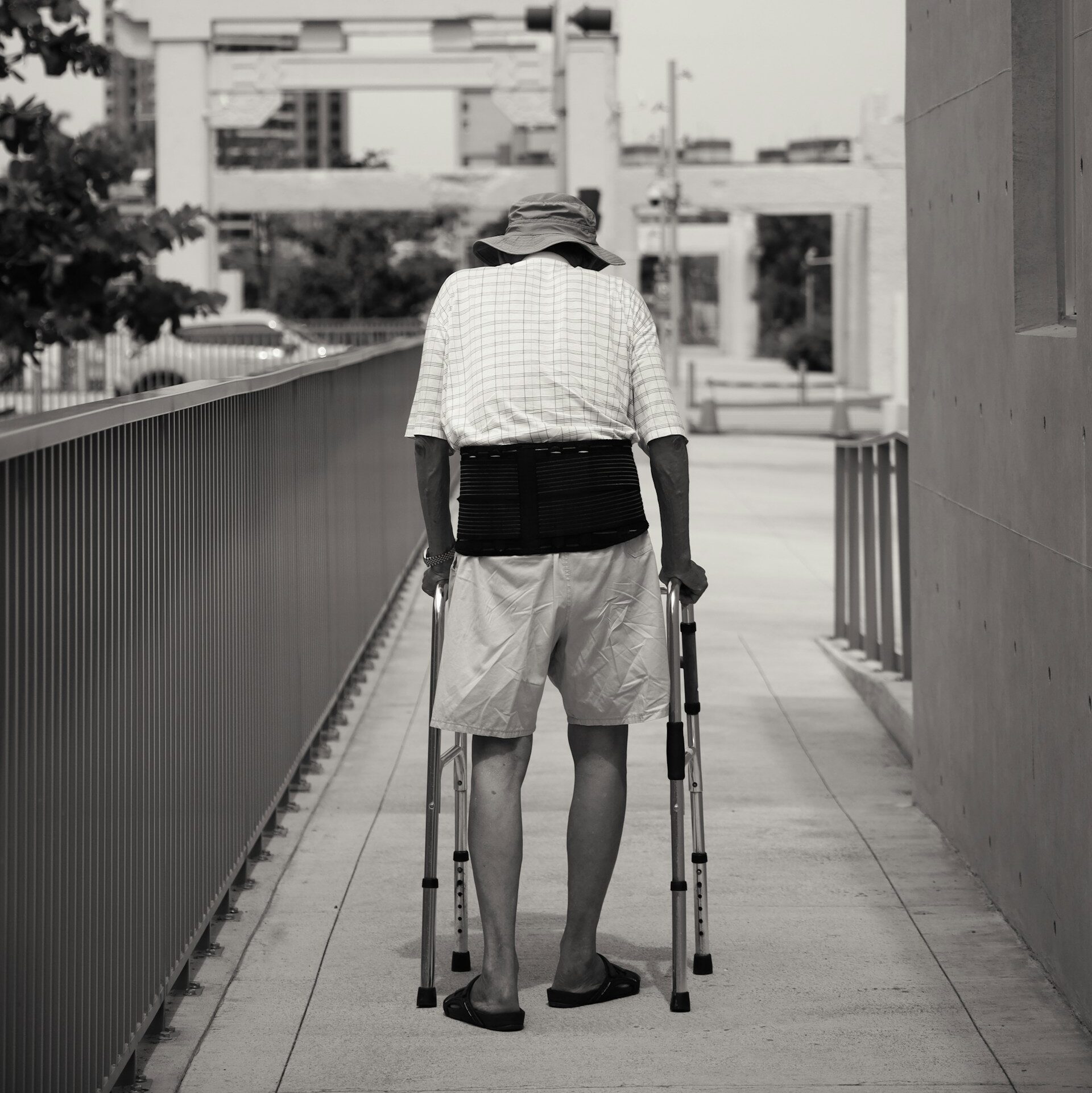
3. Surgical Treatments for Severe Spinal Stenosis
If symptoms do not improve with conservative treatments, surgery may be necessary to relieve nerve compression and restore function.
Types of Surgery for Spinal Stenosis
- Laminectomy – The most common procedure, where a portion of the vertebra (lamina) is removed to create more space for the spinal cord.
- Spinal Fusion – In cases of spinal instability, fusion surgery permanently connects two or more vertebrae to stabilize the spine.
- Minimally Invasive Surgery – Less invasive techniques that reduce recovery time and minimize tissue damage.
4. Alternative Therapies for Spinal Stenosis
Some people find relief from alternative treatments, including:
- Acupuncture – May help reduce pain by stimulating specific pressure points.
- Chiropractic Care – Gentle spinal adjustments to relieve nerve pressure.
- Massage Therapy – Helps improve circulation and reduce muscle tension.
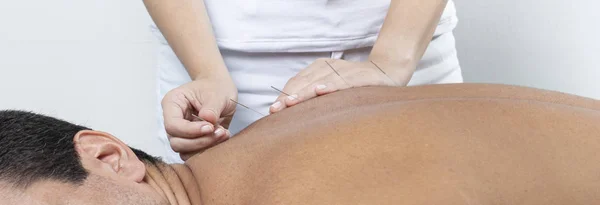
🏋️ Best Exercises for Spinal Stenosis
Exercise is one of the most effective ways to manage spinal stenosis and reduce symptoms like pain, stiffness, and weakness. The right exercises can improve flexibility, strengthen the muscles that support the spine, and help relieve pressure on compressed nerves. However, it’s important to avoid high-impact activities that could worsen symptoms.
1. Stretching Exercises for Spinal Stenosis
Gentle stretching helps improve flexibility and reduce tension in the muscles surrounding the spine.
Pelvic Tilt (For Core Stability)
- Lie on your back with knees bent and feet flat on the floor.
- Tighten your abdominal muscles and flatten your lower back against the ground.
- Hold for 5 seconds, then relax.
- Repeat 10 times.

Knee-to-Chest Stretch (For Lower Back Relief)
- Lie on your back and bring one knee toward your chest.
- Hold for 20–30 seconds, then switch legs.
- Repeat 3–5 times per side.
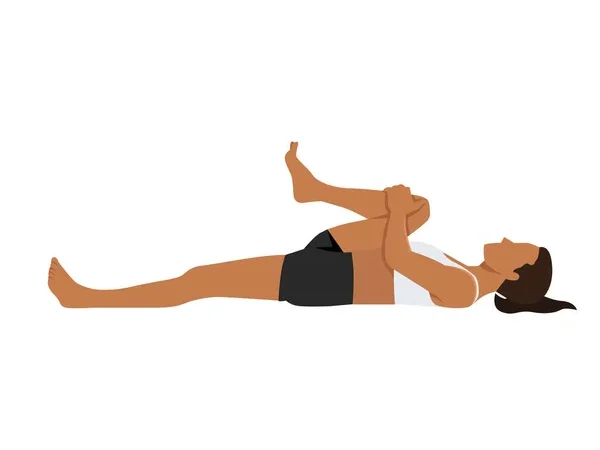
2. Strengthening Exercises for Spinal Stenosis
Building strength in the core and back muscles helps support the spine and improve posture.
Bridge Exercise (For Glutes and Core Stability)
- Lie on your back with knees bent and feet hip-width apart.
- Press through your heels and lift your hips toward the ceiling.
- Hold for 5 seconds, then lower slowly.
- Repeat 10 times.

Seated Rows with Resistance Band (For Back and Shoulder Strength)
- Sit on the floor with legs extended and a resistance band wrapped around your feet.
- Hold the ends of the band and pull back, squeezing your shoulder blades together.
- Slowly return to the starting position.
- Repeat 10–15 times.
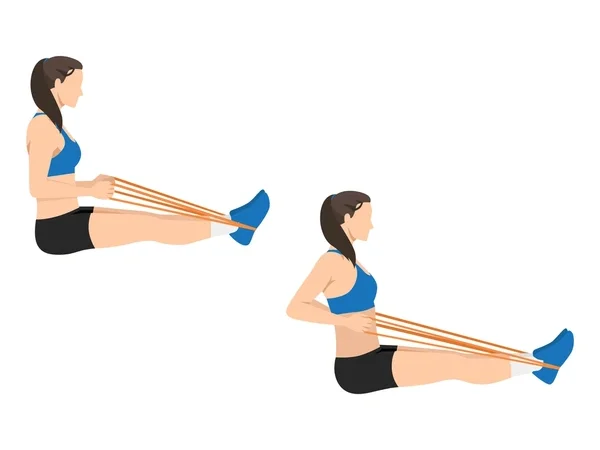
3. Low-Impact Aerobic Exercises
Aerobic activities improve circulation, reduce stiffness, and promote overall spine health.
Walking (With Forward Leaning Support)
- Walking while slightly leaning forward (such as using a walker or pushing a shopping cart) can help reduce spinal pressure.
Swimming or Water Aerobics
- Water-based exercises reduce pressure on the spine while allowing for gentle movement.
- Swimming with a kickboard or doing water walking can improve mobility.
4. Posture and Mobility Exercises
Proper posture can prevent excess strain on the spine and reduce symptoms.
Cat-Cow Stretch (For Spinal Mobility)
- Start on hands and knees, with wrists under shoulders and knees under hips.
- Inhale and arch your back (cow pose), then exhale and round your spine (cat pose).
- Repeat 10 times.
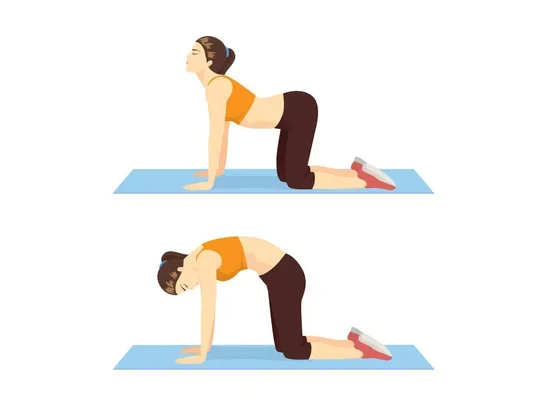
Standing Lumbar Flexion (For Lower Back Relief)
- Stand with feet shoulder-width apart.
- Slowly bend forward, reaching toward your toes without straining.
- Hold for 10 seconds, then return to standing.
- Repeat 5–10 times.
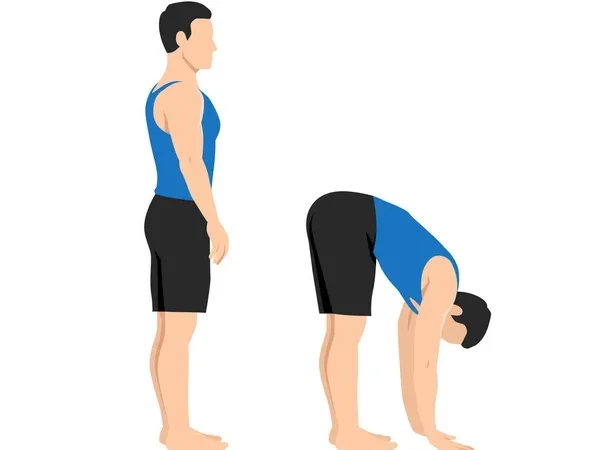
Exercises to Avoid with Spinal Stenosis
Some exercises can worsen symptoms and should be avoided, including:
❌ High-impact activities (running, jumping)
❌ Heavy weightlifting (especially deadlifts and squats)
❌ Excessive back extensions or deep backbends
🏠 Living with Spinal Stenosis: Tips for Pain Management
Living with spinal stenosis can be challenging, but with the right strategies, you can reduce pain, stay active, and improve your quality of life. Managing symptoms effectively involves a combination of lifestyle changes, self-care techniques, and medical treatments.
1. Maintain Good Posture
Proper posture reduces strain on the spine and helps prevent pain flare-ups.
- Sit with your back straight and feet flat on the floor.
- Use a chair with lumbar support or a cushion.
- Avoid slouching when standing or walking.
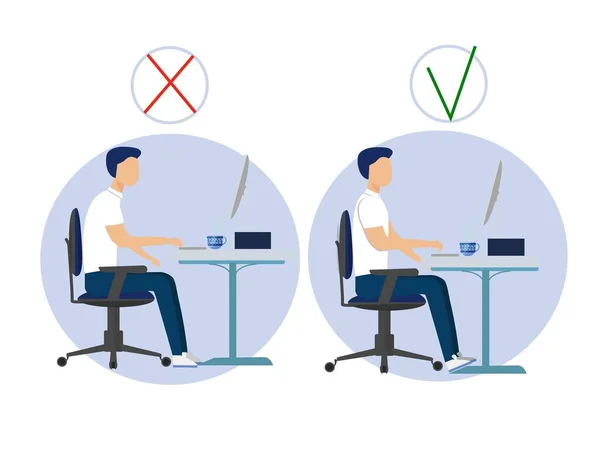
2. Stay Active with Gentle Exercises
Regular movement helps improve flexibility, reduce stiffness, and strengthen muscles that support the spine.
- Engage in low-impact activities like walking, swimming, or cycling.
- Perform spinal stenosis-friendly exercises such as pelvic tilts, knee-to-chest stretches, and seated rows.
- Avoid high-impact movements that can worsen symptoms.
3. Use Heat and Cold Therapy
Applying heat or ice can provide temporary relief from pain and inflammation.
- Heat therapy (heating pads, warm showers) relaxes muscles and improves circulation.
- Cold therapy (ice packs) reduces swelling and numbs sharp pain.
- Alternate between heat and cold to find what works best.
4. Improve Sleep Quality
A good night’s sleep is essential for pain management and overall health.
- Sleep on your side with a pillow between your knees to reduce spinal pressure.
- Use a supportive mattress and pillow for proper spinal alignment.
- Try relaxation techniques, such as deep breathing or meditation, before bed.
5. Know When to Seek Medical Help
If pain worsens or daily activities become too difficult, consult a doctor. Signs that medical intervention may be needed include:
- Increasing numbness, tingling, or weakness in the arms or legs.
- Loss of balance or coordination.
- Difficulty controlling bladder or bowel function.
🧾 Conclusion
Living with spinal stenosis can be challenging, but with the right approach, you can manage symptoms effectively and maintain an active lifestyle. Understanding the causes, symptoms, and treatment options allows you to make informed decisions about your health.
By incorporating low-impact exercises, maintaining good posture, using pain management techniques, and seeking medical guidance when necessary, you can reduce discomfort and improve mobility. While some individuals may require surgery, many find relief through non-surgical treatments like physical therapy, medication, and lifestyle modifications.
If you’re experiencing persistent pain or difficulty with daily activities, consult a healthcare professional to create a personalized treatment plan. With the right strategies, you can take control of your spinal stenosis and continue enjoying the activities you love.
🚀 Looking for the best home rehab equipment to support your spinal stenosis exercises? Check out our top recommendations below!
| Product | Description | Why It Helps | Affiliate Link |
|---|---|---|---|
| Posture Correction Pillow | Orthopedic memory foam pillow that promotes proper cervical spine alignment during sleep. | Keeps the neck and upper spine aligned, reducing pressure on nerves and improving sleep posture. | 🔗Shop on Amazon |
| Heating Pad | Large electric heating pad with adjustable heat settings and auto shut-off. | Eases muscle tension, reduces stiffness, and improves blood flow to the lower back. | 🔗Shop on Amazon |
| Ergonomic Chair | Adjustable lumbar support office chair with seat cushioning and posture design. | Supports natural spinal curves, reducing lower back pressure during long sitting sessions. | 🔗Shop on Amazon |



